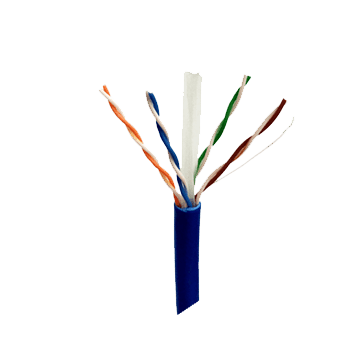Uncategorized
RJ45 Connector: The Cornerstone of Network Connectivity
RJ45 Connector
In the realm of networking, RJ45-connectors play a pivotal role in enabling seamless communication and data exchange between devices. Whether you’re setting up a home network, connecting computers in an office environment, or configuring complex data center infrastructure, understanding the fundamentals of RJ45 connectors is essential. Join us as we delve into the world of RJ45-connectors, exploring their anatomy, functionality, and applications in modern networking.
Anatomy of an RJ45 Connector: At first glance, an RJ45-connector may appear deceptively simple, but it consists of several key components:
- Connector Body: The main body of the RJ45-connector houses the internal wiring and provides a sturdy housing for the connector.
- Contacts: Inside the connector, there are eight metal contacts that make contact with the pins on the Ethernet port of a device.
- Strain Relief: Most RJ45 connectors feature a strain relief mechanism to prevent the cable from being pulled out of the connector, protecting the internal wiring from damage.
- Clip: The clip, also known as a latch or tab, secures the connector in place when plugged into an Ethernet port, ensuring a reliable connection.
Functionality of RJ45-Connector serve as the interface between Ethernet cables and Ethernet ports on devices such as computers, routers, switches, and network devices. They facilitate the transmission of data signals between devices, ensuring smooth communication within a network. RJ45 connectors are standardized connectors, meaning they adhere to specific dimensions and pin configurations defined by industry standards.
Applications of RJ45 Connectors: RJ45 connectors are used in a wide range of networking applications, including:
- Ethernet Networking RJ45-connectors are commonly used to connect devices to Ethernet networks, enabling high-speed data transmission and communication.
- Structured Cabling Systems: In structured cabling systems, RJ45-connectors are used to terminate Ethernet cables and connect them to patch panels, wall outlets, and network equipment.
- Voice and Data Network-RJ45 connectors are also used in voice and data networks to connect telephones, computers, and other network devices to the network infrastructure.
Tips for Working with RJ45 Connectors: When working with RJ45-connectors, it’s essential to follow best practices to ensure reliable connections:
- Use the correct type of Ethernet cable for your application (e.g., Cat 5e, Cat 6).
- Strip the cable jacket carefully to expose the correct length of wires.
- Arrange the wires according to the T568A or T568B wiring standard.
- Use a crimping tool to secure the wires into the connector and ensure proper termination.
- Test the continuity and integrity of the connection using a cable tester or network analyzer.
Conclusion: RJ45 connectors are the backbone of modern networking, providing the interface between Ethernet cables and network devices. By understanding the anatomy, functionality, and applications of RJ45 connectors, you can confidently navigate the complexities of network connectivity and ensure reliable communication within your network infrastructure. Whether you’re setting up a home network, configuring office infrastructure, or managing data center deployments, RJ45 connectors are indispensable components that enable seamless networking and data exchange.

